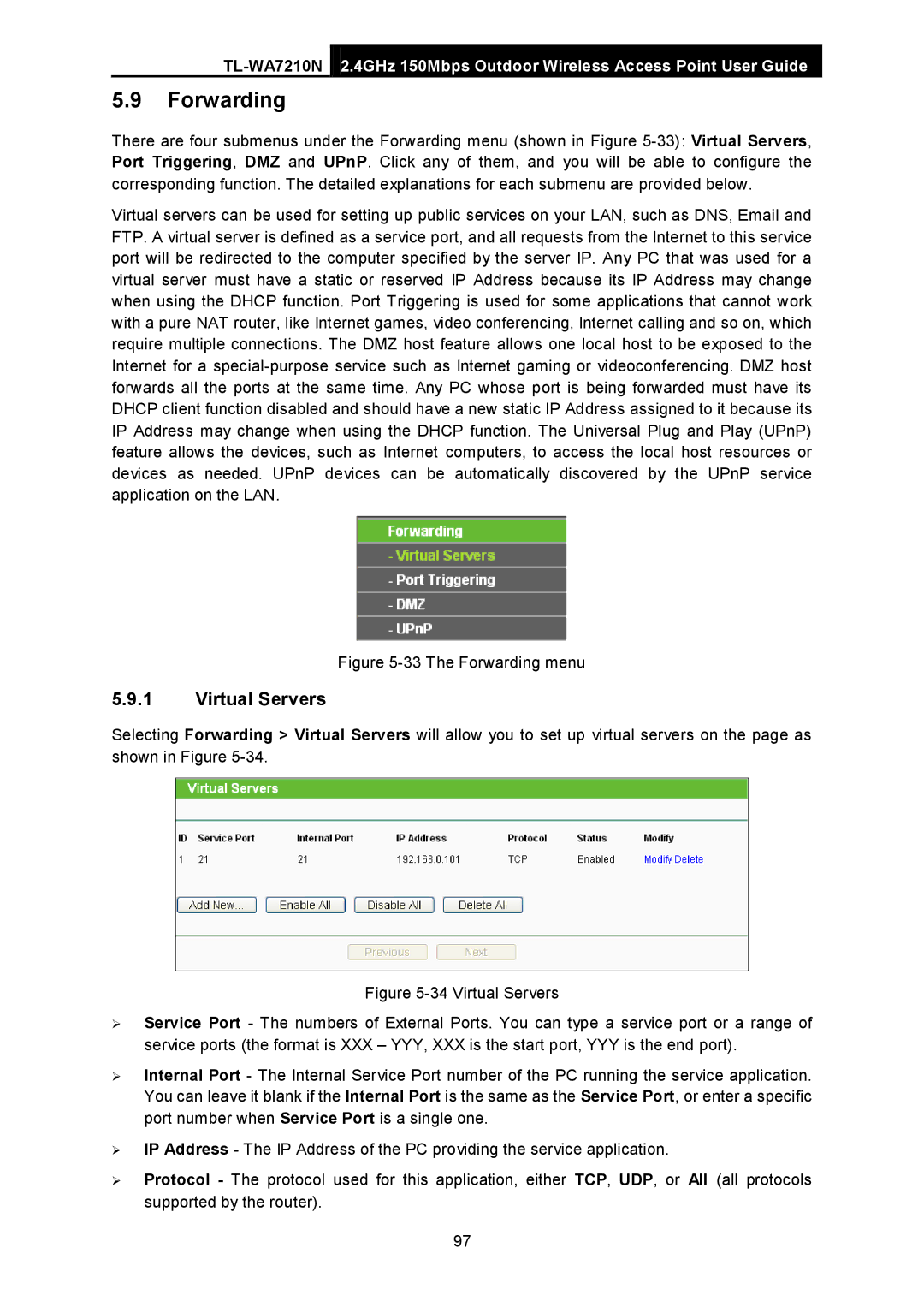
2.4GHz 150Mbps Outdoor Wireless Access Point User Guide
5.9Forwarding
There are four submenus under the Forwarding menu (shown in Figure
Virtual servers can be used for setting up public services on your LAN, such as DNS, Email and FTP. A virtual server is defined as a service port, and all requests from the Internet to this service port will be redirected to the computer specified by the server IP. Any PC that was used for a virtual server must have a static or reserved IP Address because its IP Address may change when using the DHCP function. Port Triggering is used for some applications that cannot work with a pure NAT router, like Internet games, video conferencing, Internet calling and so on, which require multiple connections. The DMZ host feature allows one local host to be exposed to the Internet for a
Figure 5-33 The Forwarding menu
5.9.1Virtual Servers
Selecting Forwarding > Virtual Servers will allow you to set up virtual servers on the page as shown in Figure
Figure 5-34 Virtual Servers
Service Port - The numbers of External Ports. You can type a service port or a range of service ports (the format is XXX – YYY, XXX is the start port, YYY is the end port).
Internal Port - The Internal Service Port number of the PC running the service application. You can leave it blank if the Internal Port is the same as the Service Port, or enter a specific port number when Service Port is a single one.
IP Address - The IP Address of the PC providing the service application.
Protocol - The protocol used for this application, either TCP, UDP, or All (all protocols supported by the router).
97
